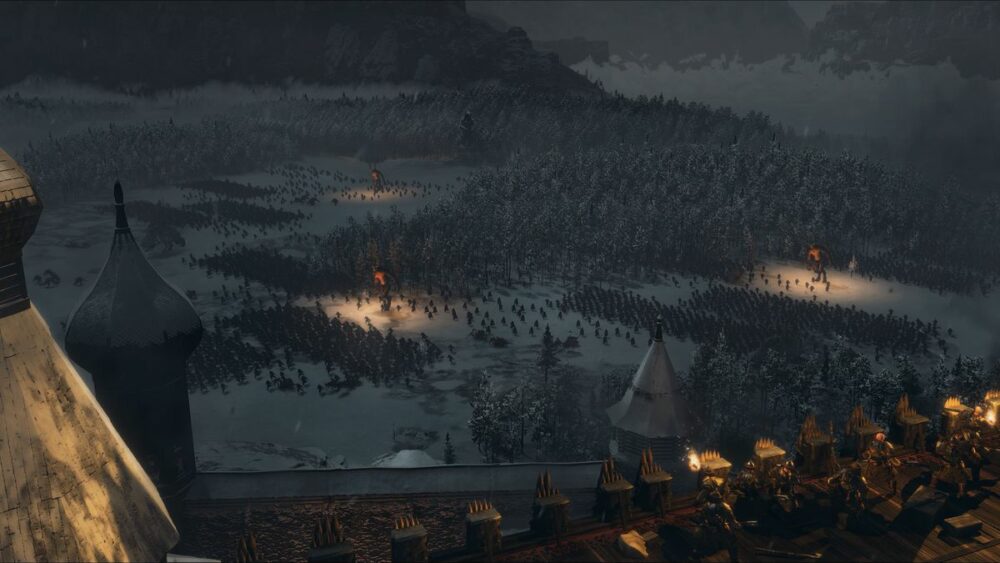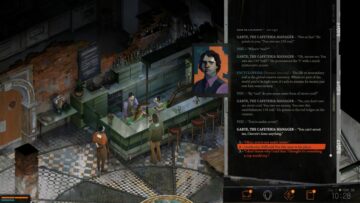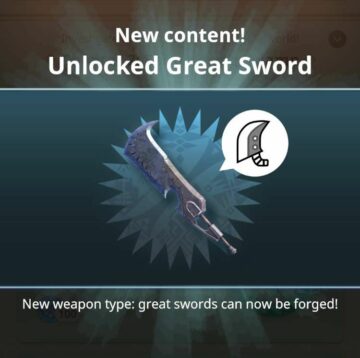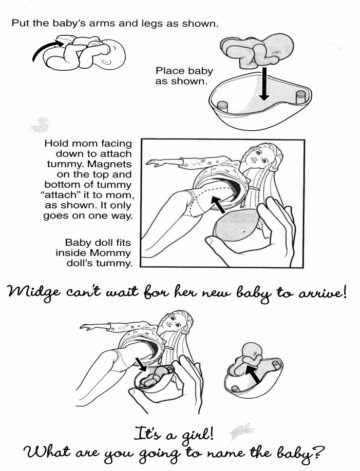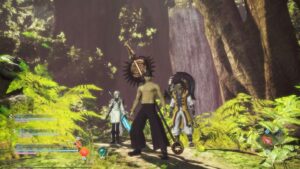One of the great joys of playing Total War: Warhammer 3 lies in watching its sprawling fantasy world evolve as new factions, units, and leaders enter its various theaters.
Shadows of Change, the upcoming DLC, introduces new Legendary Lords for three factions that launched with the game in 2022: Grand Cathay (the fantasy equivalent of China), Kislev (a hybrid of Russia and several Eastern European countries), and Tzeentch (hordes of daemons dedicated to their titular god, who favors magic and trickery). In addition to new faction-wide units, each Lord also brings their own unique mechanics to bear, both in the real-time battles and on the game’s turn-based campaign map.
These changes run the gamut from compelling to boring to uninspired.
Mother Ostankya, the newest lord for Kislev, is the standout. She’s a hag witch rumored to live in a foreboding forest at the heart of Kislev, and she’s been known to cast hexes and incantations on those she perceives as threats or boons to the land itself. Essentially, she’s a stand-in for the Baba Yaga from Slavic folklore. As such, she brings units to the faction’s roster that thrive in the wilderness, from the ferocious Things in the Woods, which can quickly flank enemy infantry before tearing them apart, to the stealthy Akshina Rangers, who can ambush enemy armies with long-range crossbows. Ostankya’s new units all give Kislev — a faction that previously relied on defensive strategies with hybrid melee/missile units — much more flexibility.
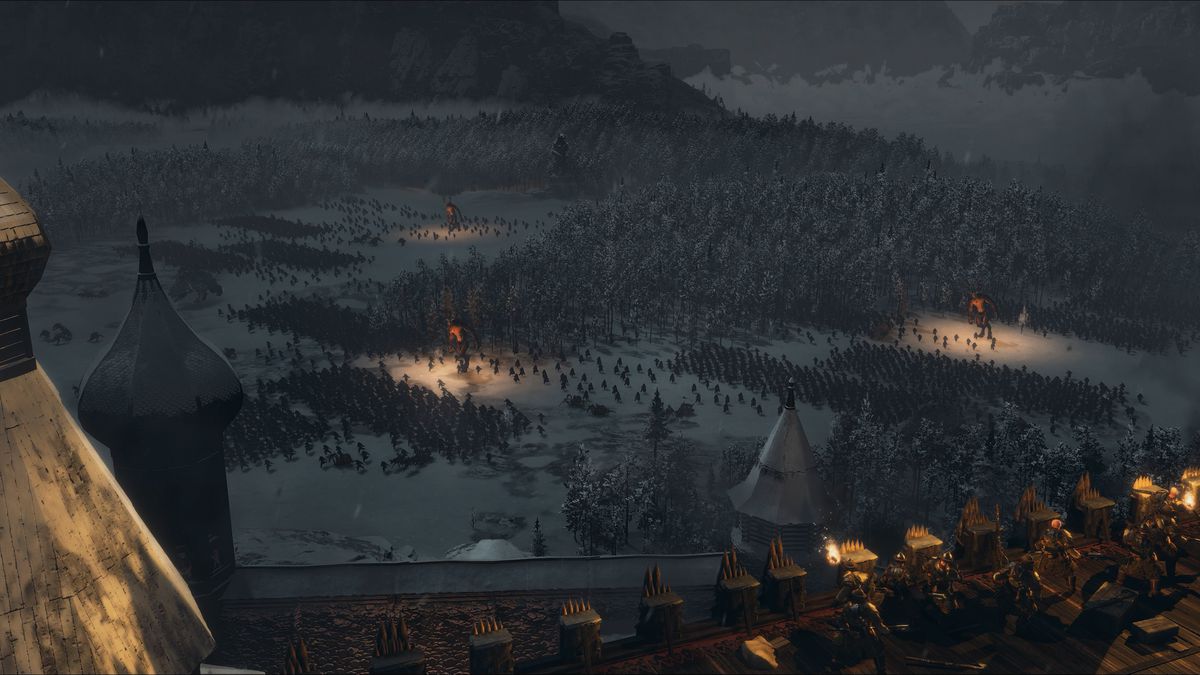
That same universal usefulness doesn’t apply to the new units of the other two factions, though. While the addition of the Cockatrice (a flying beast that can debuff enemies as easily as cover them in acidic vomit) and the Mutalith Vortex Beast (a Lovecraftian nightmare that damages nearby enemies by just standing there) bring some much-needed punching power to Tzeentch’s lineup, I didn’t find much use for Tzaangors; these dual ax-wielding beasts rely on hit-and-run tactics, which don’t complement their existing roster as much. Cathay’s new units are helpful, but much of their use is relegated to the campaign’s early turns, before I’ve established the faction’s famously powerful economy. The Zhangu War Drum, however, is incredible. The giant piece of percussion, mounted on a chariot, not only buffs either the armor or melee attack stats of nearby units, but can also hold its own in close-quarters battles.
Despite some redundancies, all three factions are in a better place in their real-time battles. They’re more flexible, and I had a blast experimenting with new synergies that weren’t available before Shadows of Change. But of course, new units are only one part of the DLC’s attractions.
Each of the three new Lords brings their own bespoke campaign mechanics to the turn-based overworld. Mother Ostankya, in keeping with her love of all things arboreal, can cast hexes on enemies that have intruded on her land and teleport her armies to magical forests dotted across the map. She can also create incantations, which can be applied to allied or enemy units on the pre-battle screen, giving them unique abilities or debuffing their stats. (My favorite summons a monstrous Elemental Bear when a unit is below 20% health; just fly a flock of weak cave bats into the enemy’s back line, and watch the bear wreak havoc in the aftermath.)
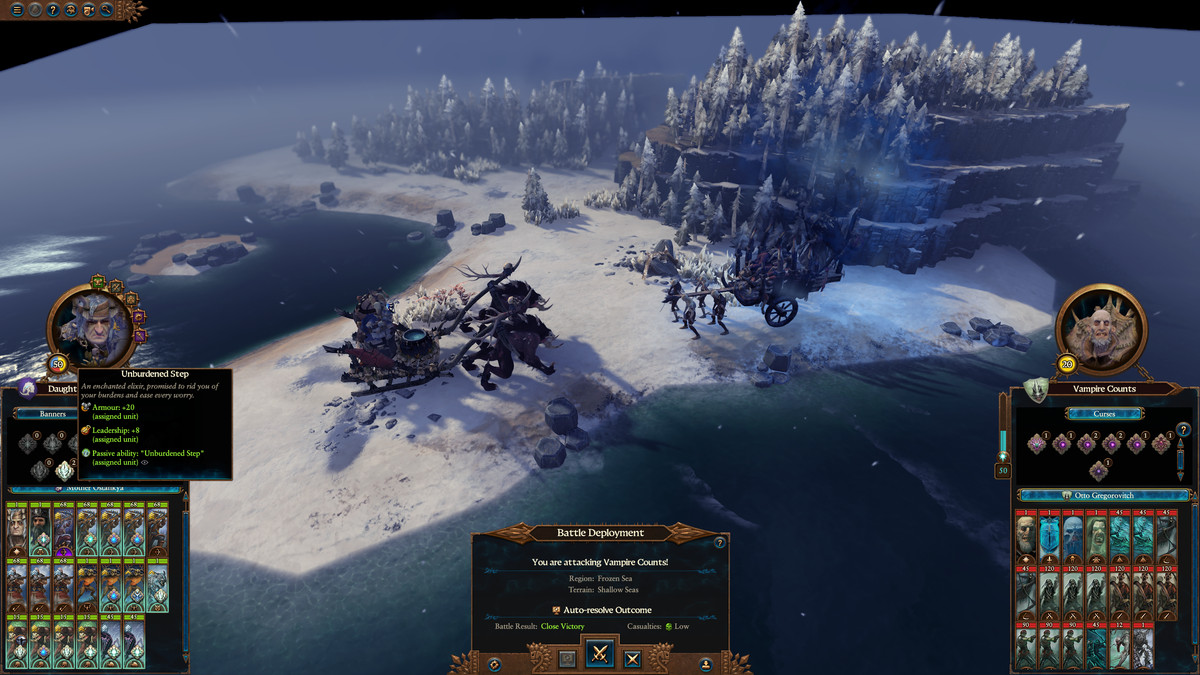
Crucially, Mother Ostankya also gets a bit of a downgrade on the campaign map — at least, for a time. Because of her nature as a reviled outcast, she doesn’t have access to many of Kislev’s human units. This forces her to either invade or ally with the “more civilized” Kislev leaders, whose better reputations will unlock the faction’s full roster in later turns. It’s a clever way to turn a weakness into a thematic constraint — when I finally made my way back to the Motherland, I felt like Aragorn returning to Minas Tirith to take control of Gondor’s forces (if Aragorn also traveled with a massive cauldron of poisonous goop).
I’ve spent so much time talking about Mother Ostankya’s contributions to Shadows of Change because she represents the best of the DLC. Her units make Kislev more flexible than ever; her campaign mechanics empower her, but also lend a thematic objective to the usual “paint the map” approach; and her overall witch-in-the-woods vibe is just chef’s kiss.
I wish the other two sparked as much joy. The Changeling of Tzeentch, who collects the forms of every other Lord in order to transform into them during battles, encourages more of a kitchen-sink strategy than a forward-thinking plan. What’s more, his campaign mechanics, which involve sowing chaos in various sections of the map before enabling a final “Grand Scheme,” made my strategy feel more erratic than genuinely devious. It doesn’t help that his army is invisible for half of the campaign, or that his cities are all hidden within enemy cities; by turn 30, I felt as invincible as much as I felt bored.
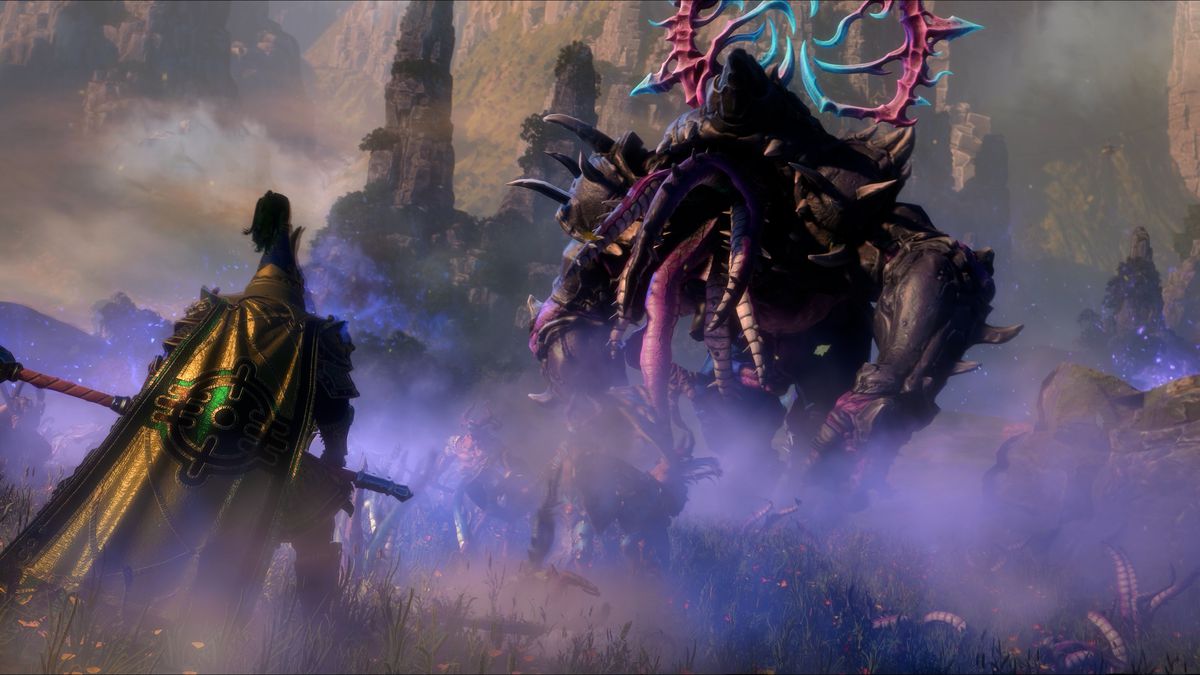
Yuan Bo, Cathay’s new Lord, brings his skills as a diplomat, spymaster, wizard, and swordsman to the forefront. By enacting Matters of State, he grants buffs to his various cities and provinces. While this ability set is undoubtedly powerful, it’s less inspired than those of the other two Lords; Deathmaster Snikch, the rat-man leader of Clan Eshin, already has a similar mechanic with his Shadowy Dealings (basically, a laundry list of assassination targets across the world).
When all is said and done, Shadows of Change is the most uneven outing in Total War: Warhammer 3’s DLC plans yet. The previous packs were giant leaps. Immortal Empires, Champions of Chaos, and Forge of the Chaos Dwarfs came into this massive fantasy world, and things felt irrevocably changed. I still remember the awe with which I first saw the four fearsome Champions tearing across the northern expanse, or the first time I struggled to hold off the wave of machine-minded dwarfs spilling out of the Dark Lands at the center of the map. Shadows of Change is less an evolution than a maintaining of the status quo. Are all three Lords powerful in their own way? Absolutely. Will I itch to play as them every time I see them on the Lord Select screen? I suspect not. Ironically, Shadows of Change may have done less to evolve Total War: Warhammer 3 than any of its DLCs yet.
Total War: Warhammer 3 Shadows of Change will be released on Aug. 31 on Windows PC. The game was reviewed using a pre-release download code provided by Sega. Vox Media has affiliate partnerships. These do not influence editorial content, though Vox Media may earn commissions for products purchased via affiliate links. You can find additional information about Polygon’s ethics policy here.
- SEO Powered Content & PR Distribution. Get Amplified Today.
- PlatoData.Network Vertical Generative Ai. Empower Yourself. Access Here.
- PlatoAiStream. Web3 Intelligence. Knowledge Amplified. Access Here.
- PlatoESG. Automotive / EVs, Carbon, CleanTech, Energy, Environment, Solar, Waste Management. Access Here.
- PlatoHealth. Biotech and Clinical Trials Intelligence. Access Here.
- ChartPrime. Elevate your Trading Game with ChartPrime. Access Here.
- BlockOffsets. Modernizing Environmental Offset Ownership. Access Here.
- Source: https://www.polygon.com/reviews/23841547/shadows-of-change-dlc-review-total-war-warhammer-3
- 1
- 220
- 28
- 30
- 31
- 7
- 8
- 9
- a
- abilities
- ability
- About
- absolutely
- access
- across
- ADDITION
- Affiliate
- Against
- All
- already
- also
- an
- and
- any
- apart
- applied
- apply
- approach
- ARE
- Army
- as
- At
- attractions
- Aug
- available
- AWE
- back
- bats
- battles
- BE
- bear
- because
- been
- before
- below
- bespoke
- BEST
- Better
- Bit
- BLAST
- Bo
- both
- bring
- brings
- but
- by
- came
- Campaign
- CAN
- Cave
- Center
- Champions
- change
- changed
- changes
- chaos
- Chariot
- China
- Cities
- City
- code
- commissions
- compelling
- complement
- content
- contributions
- Control
- countries
- course
- cover
- create
- Creative
- Dark
- dedicated
- defensive
- distance
- dlc
- do
- done
- download
- During
- each
- Early
- Earn
- easily
- eastern
- economy
- Editorial
- either
- empower
- enabling
- encourages
- Enter
- equivalent
- Essentially
- established
- ethics
- European
- EVER
- Every
- evolution
- Evolve
- existing
- faces
- famously
- FANTASY
- favorite
- feel
- fight
- Final
- Finally
- find
- First
- first time
- Flexibility
- flexible
- Fly
- flying
- For
- forces
- forefront
- forms
- forward-thinking
- four
- from
- full
- game
- Gaming
- General
- giant
- give
- Giving
- goop
- grants
- great
- had
- half
- has
- Have
- he
- Health
- heart
- help
- helpful
- her
- hidden
- his
- hold
- however
- http
- HTTPS
- human
- Hybrid
- i
- if
- in
- incredible
- influence
- information
- inspired
- into
- Introduces
- involve
- Is
- IT
- ITS
- itself
- joys
- jpg
- just
- keeping
- kiss
- known
- Land
- lands
- later
- leader
- leaders
- least
- Legendary
- lend
- less
- like
- Line
- links
- List
- Live
- Lords
- love
- made
- Magic
- maintaining
- make
- many
- map
- marks
- massive
- Matters
- May
- Mechanics
- Media
- Melee
- Mommy
- more
- most
- mother
- much
- much-needed
- my
- nature
- New
- Newest
- Newsletter
- Night
- not
- notes
- objective
- of
- off
- on
- One
- only
- or
- order
- Other
- out
- overall
- own
- part
- partnerships
- Patch
- patch notes
- PC
- percussion
- piece
- place
- plan
- plans
- plato
- plato data intelligence
- platodata
- platogaming
- play
- Playing
- policy
- Polygon
- power
- powerful
- previous
- previously
- Products
- provided
- purchased
- quickly
- Rangers
- real-time
- released
- rely
- Remember
- represents
- roster
- roundup
- Run
- Russia
- Said
- same
- saw
- scheme
- Screen
- see
- Sega
- set
- several
- she
- sign
- similar
- skills
- So
- some
- sparked
- State
- stats
- Status
- stealthy
- step
- still
- Strategies
- Strategy
- such
- Summons
- tactics
- Take
- talking
- targets
- than
- that
- The
- The Game
- the world
- their
- Them
- These
- things
- this
- those
- though
- threats
- three
- thrive
- time
- to
- total
- Total War
- Total War: Warhammer 3
- transform
- turn
- turns
- two
- undoubtedly
- unique
- unit
- Universal
- unlock
- up
- upcoming
- use
- using
- vampire
- various
- via
- Vibe
- View
- W3
- war
- Warhammer
- was
- Watch
- watching
- Wave
- way
- weakness
- weekly
- were
- when
- while
- WHO
- whole
- whose
- will
- windows
- Windows PC
- with
- Woods
- world
- XML
- yet
- you
- zephyrnet
